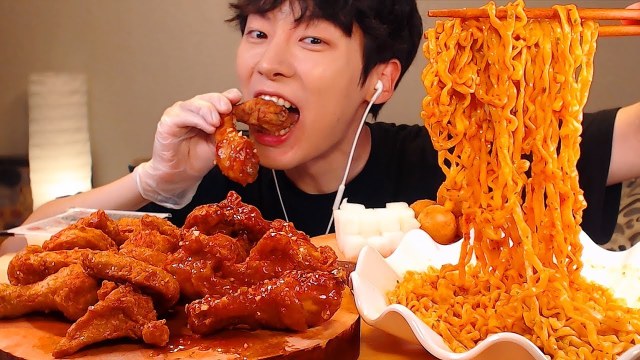Mukbang—made up of the Korean words for “eating” (meokneun) and “broadcast” (bangsong)—originated in South Korea in the late 2000s–10s. Around this time, a segment on Korean TV variety shows followed guests around as they ate. The trend expanded onto the South Korean streaming site AfreecaTV, where videos of so-called broadcast jockeys, or BJs, before a camera with a table full of indulgent foods became popular.
During a mukbang broadcast, hosts converse with viewers and express their pleasure, giving the impression that they are eating together—creating a social atmosphere very important to eating in Korean culture and which may help explain the popularity of mukbang. Other people may watch mukbang to vicariously enjoy food the viewer might not be able to enjoy themselves, for example due to dieting.
Further popularizing mukbang was a 2011 episode of Anthony Bourdain’s food and travel show No Reservations, where Bourdain participates in a mukbang broadcast. In 2014, CNN featured an article on one of the most popular mukbang broadcasters, BJ The Diva. Some Westerners took to broadcasting mukbang on YouTube, including popular broadcasters Erik TheElectric, Nikocado Avocado, and Wendy of Wendy’s Eating Show. Streaming site Twitch.tv added a “Social Eating” category in June, 2016.
A title for a broadcast will often include the type of food being eaten (e.g., Fast Food Mukbang or Crazy Donut Mukbang.) Some mukbangs may also include storytelling from the host, called storytime, also specified in the title (e.g., Mukbang with Storytime). The hashtag “#mukbang” is used on social-media sites such as Twitter to talk about this kind of content.



 Descargar Google Chrome
Descargar Google Chrome Descargar Mozilla Firefox
Descargar Mozilla Firefox Descargar Opera
Descargar Opera